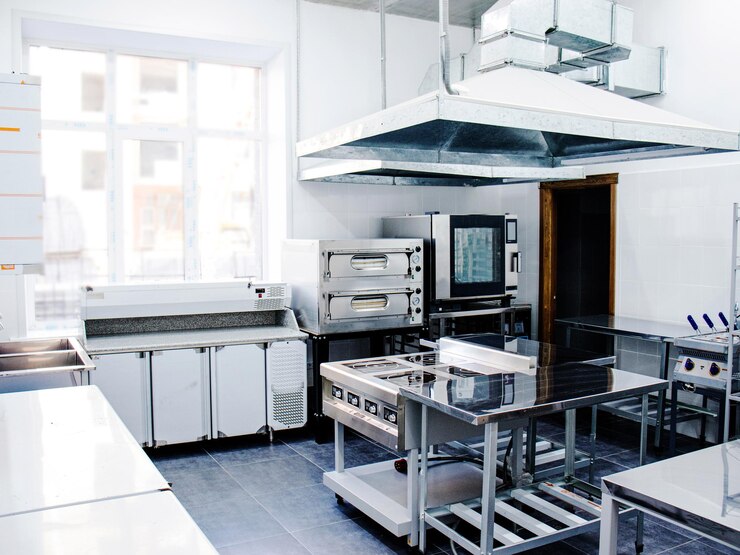9 Mistakes to Avoid When Purchasing Restaurant Equipment
Opening a restaurant is exciting, but it also takes a lot of planning. One of the most important parts is buying the right equipment. If you get the wrong items or skip important steps, it can cost you time, money, and stress. Many restaurant owners make common mistakes when buying kitchen gear and tools, especially if it’s their first time. This guide will help you learn what to watch out for so your restaurant can start strong. Let’s take a look at nine big mistakes to avoid when buying restaurant equipment in Canada and across the USA.
1. Not Planning Your Kitchen Layout First
Before you spend a single dollar, it’s important to plan how your kitchen will be set up. Think about how much space you have and where each piece of equipment will go. Buying big items without measuring can lead to serious problems. Some equipment might not fit, or it might block doors or walkways. Take measurements of your space, and sketch a basic layout. This will help you understand what size and type of equipment you need.
2. Forgetting to Check Local Health and Safety Rules
Every state and city in the USA has its own health and safety rules for restaurants. Some areas require certain types of equipment, while others ban certain features. If you don’t follow the rules, your kitchen could fail inspection, and that could delay your opening. Before buying anything, check with your local health department or fire marshal. Make sure the equipment meets local codes and is approved for commercial use.
3. Choosing the Cheapest Option Without Research
It’s tempting to buy the cheapest restaurant equipment to save money, especially when you’re just starting. But sometimes, cheap items break down quickly or don’t perform well. Buying poor-quality tools can lead to more problems and extra costs in the long run. Always compare prices and read reviews. Look at warranties, too. It’s smarter to spend a little more on a good product than to replace a cheap one every few months.
4. Not Thinking About Energy Efficiency
Electricity and gas bills can get very high in a restaurant. That’s why energy-efficient equipment is so important. Many new machines are designed to use less energy while doing the same job. This can save you a lot of money over time. Look for the ENERGY STAR® label or similar ratings when shopping. These machines may cost a little more at first, but the savings on utility bills will make up for it.
5. Buying Too Much Equipment Too Soon
Another mistake people make is buying everything at once. You don’t always need every piece of equipment right away. Start with the basics—the tools you need to run your kitchen. Once your business grows and you understand your customers better, you can buy more tools later. This will save you money and keep your kitchen from becoming overcrowded with things you don’t use.
6. Ignoring the Warranty and Return Policy
Many people forget to ask about the warranty or return policy when buying restaurant equipment. But this is very important. If your new fridge or oven breaks within a few months, you don’t want to pay full price again. Always read the warranty details. Find out what’s covered and for how long. Also, check the return policy in case something doesn’t work or fit as expected. This can protect you from big losses.
7. Skipping Used Equipment Without Checking the Condition
Buying used restaurant equipment can be a smart way to save money. But don’t just buy anything you see. Some used items are still in great shape, while others are badly worn or broken. Always inspect used tools carefully. Ask the seller if you can test the item. Look for rust, leaks, strange noises, or missing parts. If you’re not sure, bring along someone who knows restaurant tools to help you decide.
8. Not Asking Your Kitchen Staff for Input
Your kitchen staff will be using the equipment every day, so it’s a good idea to ask them what they need. They can tell you what works and what doesn’t. For example, a chef might prefer a gas stove over an electric one, or a dishwasher might need a machine that works faster. When you include your team in the decision-making process, you avoid buying equipment that no one likes or uses.
9. Forgetting About Maintenance and Cleaning
Every piece of restaurant equipment needs regular cleaning and maintenance. If you buy a machine that’s hard to clean, it can slow down your team or even lead to health code violations. Before buying, check how easy it is to take the equipment apart, clean it, and put it back together. Also, ask how often it needs service. Some machines need pro servicing every few months. Planning helps you avoid unexpected issues.
Conclusion
Purchasing the right restaurant equipment is one of the most important steps in running a successful kitchen. But it’s easy to make costly mistakes if you rush the process or skip important checks. By avoiding the mistakes we talked about in this blog, you’ll save time, money, and stress. Plan your kitchen layout, follow local rules, and do your homework. Smart equipment choices—new or used—keep your restaurant running smoothly.




